The benefits of transmission fluid are numerous. It’s a two-for-one deal since it functions as both a lubricant and a coolant in an automatic gearbox. In an automatic gearbox, pressurized fluid plays an essential part in the operation and function of the transmission. As your gearbox works, liquid flows around its interior.
It works in the same way as motor oil, but it is a fluid composed of a combination of oil and additives that both absorbs heat from the transmission and lubricates it. As a result, it prevents the transmission from overheating and getting excessive wear and tear from friction. What else can I tell you? It lasts considerably longer than motor oil, so you won’t have to replace it as often.

Dodge Ram 1500 Transmission Fluid Details
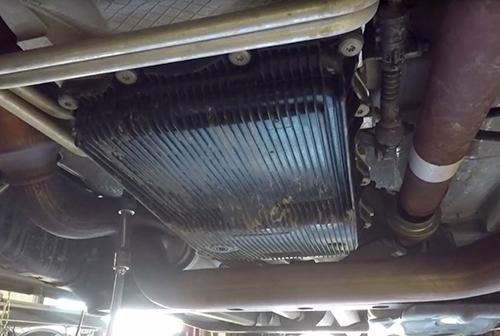
The maker urges against the use of any special additives in the transmission. The performance of an engineered product like Automatic Transmission Fluid (ATF) may be jeopardized by supplementary chemicals. As a result, no fluid additives should be added to the transmission. The use of particular dyes for detecting fluid leaks is the only exception to this rule. Avoid using sealants in your automatic transmission since they might damage seals.
Using a fluid other than the manufacturer’s recommended fluid may cause transmission shift quality and/or torque converter shudder to deteriorate, as well as increasing the frequency of fluid and filter replacements. For more details on fluid recommendations, see “Fluids, Lubricants, and Genuine Parts” in this chapter.
If the fluid temperature is below 50°F (10°C), it may not show on the dipstick. Do not add any more fluid until the temperature has been raised enough to give an accurate reading. Warm the fluid by running it at idle, in PARK, to increase its viscosity.
Automatic Transmission – Eight-Speed Automatic:
Use only MOPAR® ZF 8&9 Speed ATF™ Automatic Transmission Fluid, or equivalent. Failure to use the correct fluid may affect the function or performance of your transmission.
Automatic Transmission – Six-Speed Automatic:
Use only ATF+4® Automatic Transmission Fluid. Failure to use ATF+4® fluid may affect the function or performance of your transmission. We recommend MOPAR® ATF+4® fluid.
RAM 1500 Transmission Fluid Change Intervals
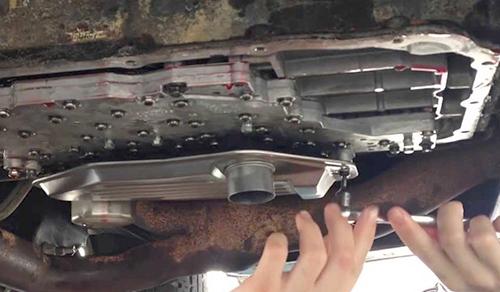
Many individuals are aware that their rams’ engine oil and filter should be changed, but few people realize that the transmission fluid should also be replaced. A number of factors influence the necessity for a transmission to be flushed regularly. Most manufacturers recommend that you change the fluid every 30,000–60,000 miles for a manual gearbox.
The majority of today’s drivers have an automatic gearbox, which is more difficult to comprehend. Some automobiles may never have their transmission fluid changed unless there’s a leak or another issue. Engine oil and filters are both changed at specific intervals, regardless of make and model.
Transmission fluid has the same function as automobile engine oil in your car’s transmission. This liquid lubricates the moving components of the transmission. When the fluid becomes old, tainted, or missing owing to a leak, you will begin to notice or feel difficulties with how your transmission shifts.
- Getting into gear or keeping it in gear is a problem.
- When changing gear, there may be a lurching or thumping. If your transmission is working properly, you won’t notice it performing its function; if you really feel the changes, you might have a problem.
- There might be a gap between when you press the gas pedal and when the vehicle actually begins to move.
- Hissing, roaring, or grinding noises may be heard.
If you have a problem, the ideal thing to do is take your automobile to a ram service center in your area so that it may be inspected.
Why should I change the transmission fluid in my Dodge RAM 1500

The first question, however, is whether or not you need to change your transmission fluid at all. Consult your Dodge Owner’s Manual for the answer. Some newer transmissions are built to never require a fluid change unless there is a leak or an issue.
However, let’s presume your automobile needs a transmission fluid change as part of routine maintenance. The most significant reason to replace it is to preserve the gearbox in good working order. Stop-and-go driving, towing, and other high-stress activities can all reduce its efficacy. Transmission fluid has two functions in addition to lubricating the transmission components: It not only serves as hydraulic fluid but also keeps the transmission cooler by functioning as hydraulic fluid.
The most important reason to get your transmission serviced is that it will save you money in the long run, both financially and in terms of fuel efficiency. Replacing a transmission fluid can cost thousands of dollars, but flushing it may be extremely expensive.
Transmission Fluid Color

The color of your transmission fluid will alter over time as a result of usage. Contaminants that pass through a failing transmission filter may also cause the fluid to change color. Do you think your vehicle’s gearbox has the correct hue? Check out our Transmission Fluid Color Guide below to see if your car’s gearbox is working properly or if it’s time for a treatment and renewal:
- Brand New Transmission Fluid: Dark red
- Normal Transmission Fluid: Darker brick red
- Service Your Vehicle Soon: Deep blood red/rust red
- Service Your Vehicle Immediately: Burnt/almost black
What Does It Mean if Your Car’s Red Fluid Leaks?
Have you noticed a dark red fluid leaking from beneath your automobile in Brooklyn Center or Coon Rapids? It’s probably a transmission fluid leak! Fortunately, the color of transmission fluid makes it easy to differentiate between different vehicle fluids. That said, here are the other three most common reasons for transmission fluid to seep out of your car:
- Consistency: Transmission fluid is slippery and greasy, much like engine oil.
- Location of the Leak: Oil leaks from the center or front of a car’s engine, most often due to a faulty oil seal.
- Odor: The smell of transmission fluid is oily/petroleum-like. If the fluid must be replaced as soon as possible, it will most likely have a burnt odor.
Checking and Adding Transmission Fluid on Dodge Ram 1500

To protect the transmission, avoid using any modifiers. Because the performance of an engineered product like ATF might be affected by added chemicals, it’s best to avoid them. As a consequence, no fluid additives should be applied to the transmission. Transmission sealers should be avoided since they can harm seals.
Do not use chemical flushes in your transmission as the chemicals can damage your transmission components. Such damage is not covered by the New Vehicle Limited Warranty
Check the transmission fluid level when it’s at operating temperature, which is usually around 80°C (180°F). This occurs after at least 15 miles (25 km) of driving. The fluid may not be held comfortably between the fingertips while the car is in operation. To correctly check the auto- matic transmission fluid level, follow these steps:
- At idle speed and normal operating temperature, run the engine.
- The car must be on a level surface.
- Turn the key to the “On” position and delay 15 seconds. Fully apply the parking brake and press down on the brake pedal.
- The gear selector should be placed in each gear position, beginning with P (Park), and ending with the lever in P (P).
- Remove the dipstick, clean it with a cloth and reinsert it until seated.
- Remove the dipstick again and check both sides of the fluid level. At normal operating temperature, the fluid level should be between the “HOT” (upper) reference holes on the dipstick. Make sure that both sides of the dipstick have a thick layer of oil. If necessary, add more oil into the dipstick tube after filling it with any amount using the oil fill tube. Allow at least two (2) minutes for all of the oil to drain out of the transmission before checking for accuracy.
- NOTE: If the transmission needs to be checked at temperatures below the operating range, make sure the fluid level is between the two “COLD” (lower) holes on the dipstick with the fluid at 70°F (21°C). It should be between THE “HOT” (upper) reference holes when the transmission reaches 180°F (82°C). Remember that it’s best to check the level when things are running smoothly.
- Check for leaks. Release parking brake.
NOTE: It’s also worth noting that if the fluid temperature is under 50°F (10°C), the dipstick may not register. Add fluid only when the temperature rises high enough to provide an accurate reading.
After checking or refilling the fluid, make sure the dipstick cap is properly reseated to prevent dirt and water from entering the transmission. It’s typical for the dipstick cap to spring back slightly from its fully seated position after it has been fully inserted into the dipstick tube, as long as its seal is engaged with the tube.
Fluid Level Check — Eight-Speed Transmission

The transmission fluid level is automatically set at the factory and does not need to be adjusted under typical usage. There is no dipstick because regular fluid level checks are not required. To verify the transmission fluid level, your authorized dealer may use specialist service tools. If you detect any type of fluid leak or transmission fault, go straight to your authorized dealer as soon as possible to have the transmission fluid level checked. Operating a car with an incorrect fluid level can result in serious transmission damage.
NOTE: Contact your approved dealer as soon as possible if there is a transmission fluid leak. Transmission damage may become severe. Your authorized dealer has the necessary tools to ensure that the fluid level is properly adjusted.
Fluid Level Check — Six-Speed Transmission
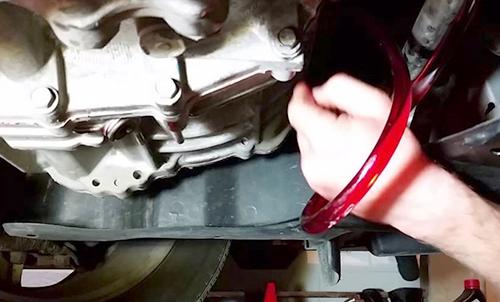
When the transmission is at normal operating temperature (170-180°F / 77-82°C), it’s essential to check the fluid level. This generally happens after at least 15 miles (25 km) of driving. When the fluid can’t be comfortably held in between the fingertips, it’s time to check the level. The transmission sump temperature may be read in the EVIC/DID screen (for further information, see “Electronic Vehicle Information Center” or “Driver Information Display (DID)”).
Please follow these steps to verify the transmission fluid level accurately:
- Use an accurate digital thermometer (such as a laser thermometer or infrared thermometer) to check the temperature of the vehicle’s cooling system before operation. Make sure that no foreign materials are stuck in any of your car’s systems (fluids, hydraulic lines, etc.). Warm up the engine for approximately 10 minutes before using it.
- Park the car on a level surface.
- Run the engine at a reasonable speed for at least 60 seconds before shutting it off.
- Apply the parking brake fully and push the brake pedal.
- Remove the key from the ignition and hold it in one hand. With your other hand, twist the shift lever between each gear position (allowing time for the transmission to fully engage in each position), culminating with PARK.
- Remove the dipstick and clean it with a cloth. Reinsert it until seated.
- Remove the dipstick and check both sides of the fluid level. The reading on one side of the dipstick is only accurate if there is a solid layer of oil on both sides. If the actual level is at or above the hole in the dipstick. The oil level should be between the “HOT” (higher) reference holes on the dipstick at normal operating temperature. If the fluid level is low, add fluid through the dipstick tube to bring it up to par. Overfilling is not permitted. Only use the specified fluids (see Fluids, Lubricants, and Genuine Parts). After adding any quantity of oil through the dipstick tube, wait a minimum of two minutes for the oil to fully drain into the transmission before checking the fluid level again.
- If the fluid temperature is less than 50°F (10°C), it may not show up on the dipstick. Do not add more fluid until the temperature has been raised enough for an accurate reading. To warm the car’s oil, run it at idle, in PARK, while it warms up.
NOTE: If the transmission needs to be checked below operating temperature, the fluid level should be between the two “COLD” (lower) holes on the dipstick with the fluid at 60-70°F / 16-21°C. When setting the fluid level after a transmission service or fluid change, use only the COLD region of the dipstick as a rough guide. Once the transmission reaches normal operating temperature, recheck and adjust as needed.
It may not register on the dipstick if the fluid temperature is below 50°F (10°C). Do not add fluid until the temperature has risen sufficiently to provide an accurate reading. Warm the coolant by running the engine at idle, in PARK, to get it up to operating temperature.
When adding transmission fluid, double-check that your engine was on when you checked the fluid level. If the transmission fluid level is low in your 1500, add it through the dipstick tube. Over the years, Ram’s transmissions have gotten more sophisticated, and it’s important to use the correct sort of transmission fluid as directed in your owner’s handbook (generally found at the back of the manual in a section titled Fluid Capacities.) When adding transmission fluid to a RAM 1500, be cautious not to add too much at once because excess fluid will be difficult to remove if you overfill.
If your RAM 1500’s transmission is acting up, such as with sluggish shifting or hesitation, check the fluid level first. It’s amazing how many drivers spend thousands of dollars on transmission repair when a half quart of transmission fluid would have fixed the problem for virtually nothing.


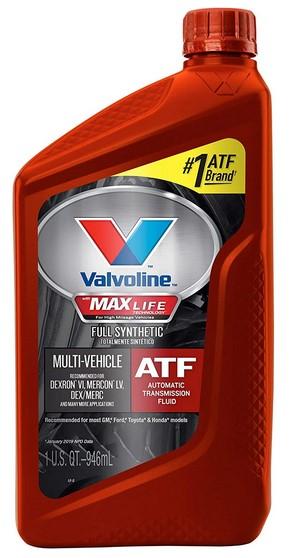
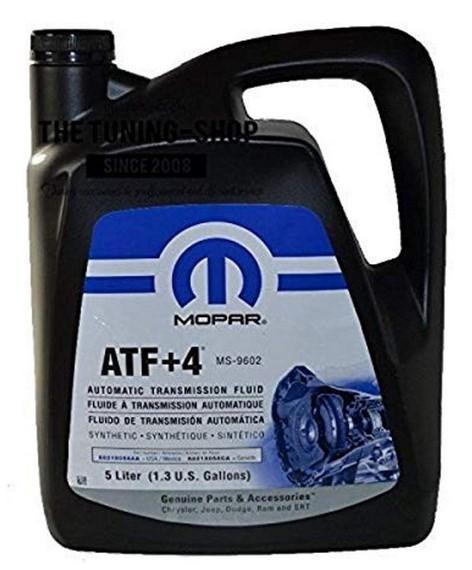
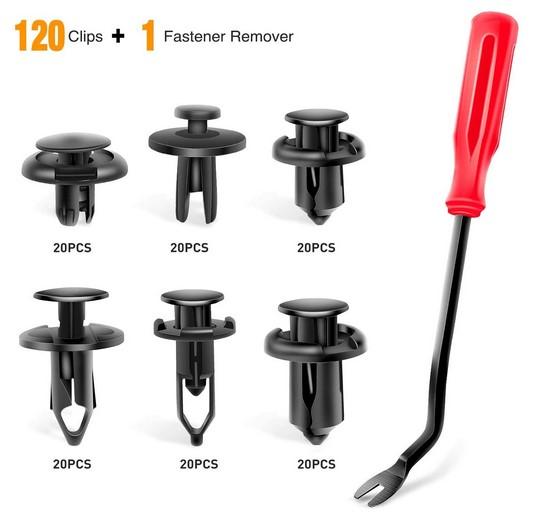
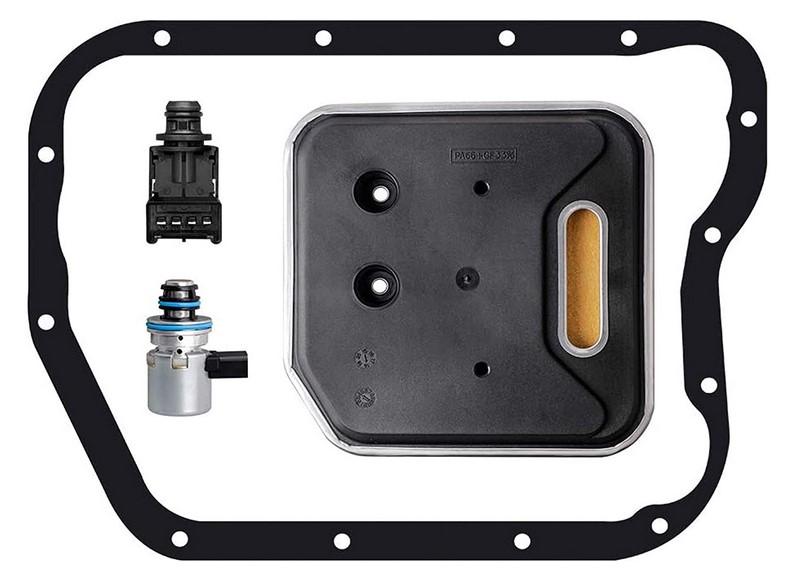
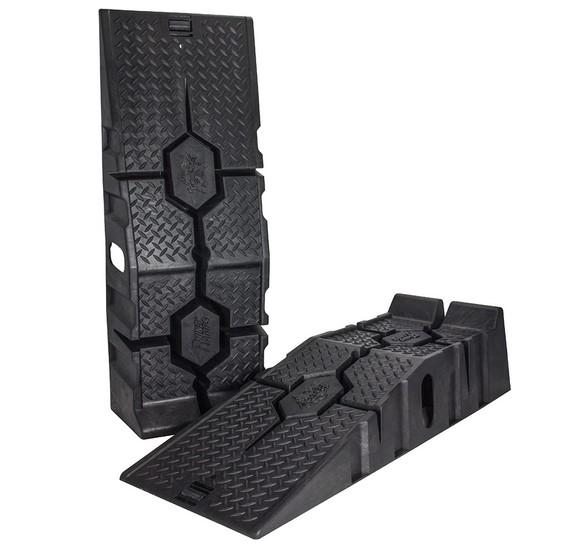
[…] sign your transmission fluid is in need of attention is if you notice a drop in its level. Checking and topping off the fluid […]
[…] water mixes with transmission fluid, it can cause the fluid to become milky in appearance and lose its lubricating properties. This can […]
[…] precautions during new transmission fluid or replacement and tips for properly disposing of used transmission oil. Lastly, discover different types of oils available along with their benefits including synthetic […]
[…] precautions during new transmission fluid or replacement and tips for properly disposing of used transmission oil. Lastly, discover different types of oils available along with their benefits including synthetic […]